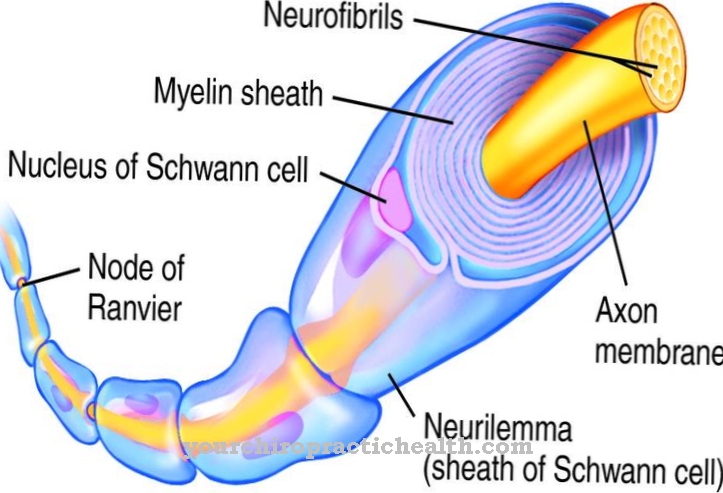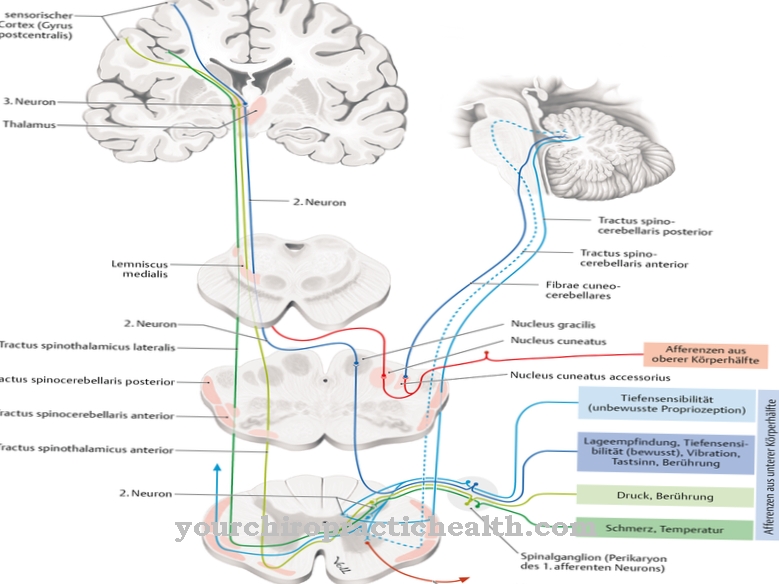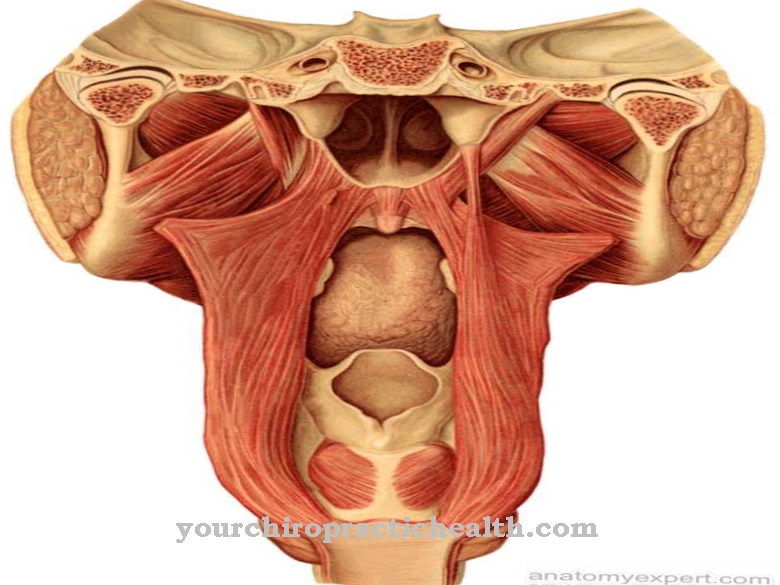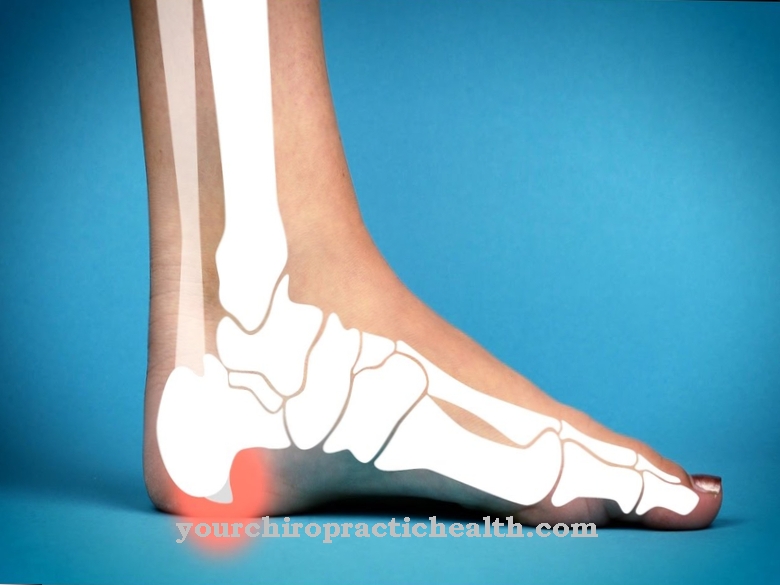Monocytes are cells of human blood. They belong to the white blood cells (leukocytes) and play a role in the immune system.
What are monocytes?
Monocytes are part of human blood. They belong to the cell group of leukocytes and thus play a role in defense. Like many other leukocytes, monocytes can leave the blood and migrate into tissue.
There they develop into macrophages. Macrophages are phagocytes. They remove cell debris, destroy tumor cells, eat bacteria, other pathogens and foreign bodies and help heal wounds.
Anatomy & structure
Monocytes are very variable in their external appearance. They have a diameter of 4 to 21 µm. This makes them one of the largest blood cells within the leukocyte cell group. About three to eight percent of all leukocytes are monocytes.
As their name suggests, they have a single cell nucleus. This is quite large and usually bean-shaped. Compared to other cells and to its size, it contains relatively little cytoplasm. Monocytes are not homogeneous, which means that there are different subgroups. The cells typically have the surface marker CD14 on their surface. But there are also monocytes that carry the surface marker CD16 in addition to the CD14 marker. Based on the combinations of different surface markers, three subpopulations of monocytes can be distinguished. These are the "Classical monocytes" (CD14 ++ CD16-), "Intermediate monocytes" (CD14 ++ CD16 +) and "Non-classical monocytes" (CD14 + CD16 ++).
Monocytes are formed in the bone marrow during monocytopoiesis. Monocytopoiesis is a part of hematopoiesis. The cells go through various stages during maturation. From the hemocytoblast they develop through the monoblast and the promonocyte to the finished monocyte. Both the monocytes and the neutrophil granulocytes develop from the bipotent stem cell CFU-GM. The cell lines of monocytes and granulocytes only split up at a later stage of differentiation. The formation of cells is influenced by the growth factors GM-CSF (granulocyte-macrophage-colony-stimulating factor) and M-CSF (monocyte-colony-stimulating factor).
Monocytes only circulate in the blood for about 12 to 48 hours, after which they usually migrate to the surrounding tissues, where they further differentiate into different cell forms.
The most important storage location for monocytes is the spleen. From here they can be released in large numbers in case of acute need.
Function & tasks
During the short time that the monocytes circulate in the blood, their main task is phagocytosis. Inside, the cells have numerous lysosomes. Lysosomes are cell organelles that contain digestive enzymes. If the monocytes now encounter a pathogen or foreign body, they absorb it into their cell interior. There it is rendered harmless by the lysosomes and digested.
The monocytes belong to the unspecific cellular defense. They not only eat pathogens and foreign substances, but also produce cytokines, chemokines, growth factors and complement factors. Most of these substances play a role in immunological reactions and inflammatory processes within the body. They are therefore also referred to as mediators.
Monocytes are also able to present some of the material they phagocytosed on their surface. One speaks here of an antigen presentation. The lymphocytes recognize these presented antigens and then produce antibodies. This means that more of these pathogens can be rendered harmless more quickly. When the monocytes have migrated into the tissue, they are called macrophages.
Macrophages recognize foreign proteins in tissue. They also take up these foreign proteins in the course of phagocytosis and break them up intracellularly. They also release chemical attractants to attract further macrophages and other immune cells. They also release cytokines that cause local inflammation. The antigen is presented to the macrophages by the MHC-II molecule.
But the macrophages not only take care of foreign materials, they also remove old or defective cells in their own body. If the infection has been successfully fought, the phagocytes are also involved in the healing process. They promote the formation of scar tissue and the formation of new blood vessels.
Some macrophages have special functions in organs. For example, there are macrophages in the testes that secrete a substance that neighboring cells need to be able to produce testosterone.
Diseases
If the number of monocytes in the blood is reduced, it is called monocytopenia. The lower normal limit is 200 cells per microliter of blood. Monocytopenias usually occur in the context of leukemia. An increase in monocytes is called monocytosis. Monocytosis is a subtype of leukocytosis.
Monocytosis is found in chronic inflammation, necrosis and disease processes with increased phagocytosis. For example, systemic histoplasmosis or leishmaniasis lead to monocytosis.
One disease in which monocytes play an important role is tuberculosis. In tuberculosis, the pathogen, Mycobacterium tuberculosis, reaches the lungs via the airways. There the macrophages pick up the pathogen. However, the pathogens have a protective layer so that they cannot be finally digested by the macrophages. In order to still protect the body from the bacteria, more monocytes are taken from the blood.
These transform into so-called epithelial cells and surround the macrophages with the bacterium like a protective wall. The cells within this protective wall die, but the pathogens remain trapped. It only becomes problematic when the protective wall can no longer be maintained due to an immune deficiency. The pathogens can then be released years after the initial infection and cause reinfection.













.jpg)

.jpg)
.jpg)











.jpg)